With the continuous development of technology, the fields of online education and digital learning have attracted increasing attention. This article will explore in detail the importance of standards in these areas for successful online education and describe how to implement them. Let’s find out together.
As technology continues to advance, digital learning and online education have become hot topics.
However, when we explore quality online training, what cannot be ignored is the discussion of online learning technology standards. These standards are critical to the success of online education, and this article will explain in detail their importance and how to implement them.
1. Courseware and platform selection: online education course standardization
Standardized online courses are highly portable and can run seamlessly on multiple devices and operating systems to meet the changing needs of users. In addition, this course can also make full use of the rich and diverse multimedia resources on the Internet to improve teaching quality, reduce reliance on traditional teaching materials, and reduce learning costs.
Standardized online learning technology provides efficient and accurate guidance and suggestions through academic tracking services, thereby improving learning efficiency and results. It collects and integrates students' learning behaviors and feedback to provide teachers and students with targeted guidance and suggestions. At the same time, these learning data can also help evaluate and improve deficiencies in the teaching process, providing a reliable basis for future education decisions.
For example, MOOC (Massive Open Online Course) is a massive open online course platform, which has become one of the models of high-quality online education in the Internet era. MOOC courses adopt internationally accepted advanced educational concepts, and are carefully constructed from teaching content, teaching design to teaching methods. This allows students to easily enjoy high-quality educational resources no matter where they are. Through MOOC, students can choose courses that suit them according to their own time and interests, and improve their knowledge and skills without being restricted by geography and time. This flexibility and convenience make MOOC an important tool in modern education, providing students with global educational opportunities.
Standardized online learning technology can significantly improve teaching effects, provide teachers and students with a more efficient interactive environment, and help both parties better achieve learning goals. In addition, diverse teaching methods, such as live video and interactive Q&A, can attract students' attention and significantly improve their learning experience.
2. International standards for online courseware
Ensuring the quality of online learning and standardizing the teaching process is a challenge. In order to meet the needs of diverse students, a standardized online learning system needs to be established. The United States has always been a leader in the formulation of underlying technical standards.
We will discuss several common online learning standards in detail: AICC, SCORM, xAPI and CMI5.
AICCThe full name of the Airline Industry Computer-based Training Committee was established in 1988 by the US aviation industry. The original intention of this standard was to standardize pilot training materials to ensure the safety and reliability of air transportation. However, because it mainly focuses on the aviation field and lacks coverage of knowledge and skills in other fields, it is insufficient for the online learning needs in the mobile Internet era.
3. SCORM, the most widely used online learning technology standard 
4. XAPI, the new online learning standard in the mobile Internet era
XAPI originated from the Advanced Distributed Learning (ADL) in the United States. Since it was put into use in 2013, it has gradually emerged. Compared with past standards, XAPI has shifted its focus from pure online resource sharing to students' actual experience and learning process, including classroom participation, interaction efficiency and other dimensions. Its core is to provide a more detailed and comprehensive perspective to deeply understand students' learning process, complementing new real-time and situational learning methods.
5. The latest online learning standard CMI5 
CMI5, the full name of "Constructed Methods Interoperability V5", is one of the internationally recognized online learning standards. Compared with the above three major standards, CMI5 pays more attention to the individual differences and personalized needs of students. This standard is based on the latest teaching theory and practical experience and can better promote students' self-regulation and growth. Although CMI5 came out in 2015, its popularity in the domestic market still needs to be improved.

6. Comparison of differences between AICC, SCORM, xAPI and CMI5
First, let’s take a look at the differences between AICC and SCORM. AICC is a standard that started in the 1980s. The standard is too old and can no longer meet the current equipment and platforms; while SCORM is relatively new. Its main goal is to ensure the consistency of learning interactive experience, while achieving interactive tracking and result analysis, SCORM’s courseware format should be the most widely used standard format at present.
Secondly, xAPI will soon replace SCORM and become the new mainstream industry standard, and will be backward compatible with SCORM. This new standard aims at greater flexibility and scalability. In the new online learning environment, more applications may appear in the future. In contrast, SCORM has been used and proven in practice for many years and can provide users with stable and reliable service support.
Furthermore, let’s discuss how CMI5 differs from previous standards. CMI5 stands for "Learning Outcome Evaluation Model" and pays more attention to the user's learning process and its result identification. Within the CMI5 framework system, it has become possible to build a more scientific and comprehensive learning evaluation mechanism. Based on this, we can better grasp students' learning status and ability level, and then effectively guide the development of learning activities and improve teaching effects.
Take recording learning as an example:
- AICC:The courseware itself does not collect data and only records scores; for example, Zhang San scored 60 points
- SCORM: Have simple behavior records. For example: Zhang San – completed the PS course – scored 60”
- XAPI&CMI5: Completely record the learning processFor example, "Zhang San completed the PS course with a score of 60 points from the beginning of the course. How long did the video study last during the learning process? How many times did he repeat the study of which knowledge point?" , how many times have you practiced the knowledge points and exercises, which knowledge points have you not mastered, and what is the overall exam passing rate...

In a relatively detailed analysis of the four technical specifications of AICC, SCORM, xAPI, and cmi5, it is not difficult to find that although these technologies have their own uniqueness in development stages, functional characteristics, and application fields, overall, Their purpose is to provide users with a better mobile learning experience, further promote the construction of educational informatization, and take improving learning outcomes as the ultimate goal. Next, I will conduct an in-depth discussion of “immersive learning”.
The above is my personal thinking and practice at work. Everyone is welcome to discuss it together.
This article was originally published by @chuangye on Everyone is a product manager. Reprinting without permission is prohibited
The title picture comes from Unsplash, based on the CC0 protocol
The above is the detailed content of Artificial Intelligence: A revolutionary force transforming education. For more information, please follow other related articles on the PHP Chinese website!
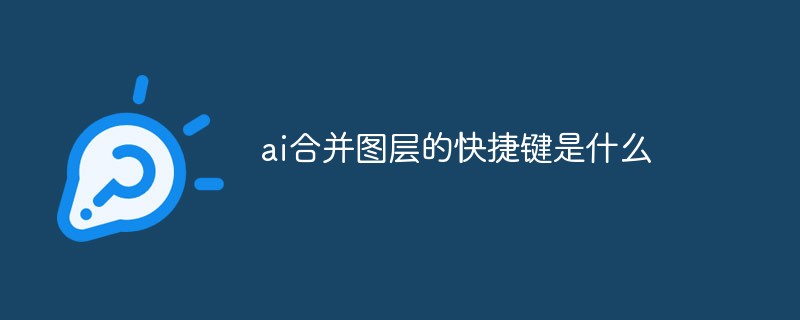 ai合并图层的快捷键是什么Jan 07, 2021 am 10:59 AM
ai合并图层的快捷键是什么Jan 07, 2021 am 10:59 AMai合并图层的快捷键是“Ctrl+Shift+E”,它的作用是把目前所有处在显示状态的图层合并,在隐藏状态的图层则不作变动。也可以选中要合并的图层,在菜单栏中依次点击“窗口”-“路径查找器”,点击“合并”按钮。
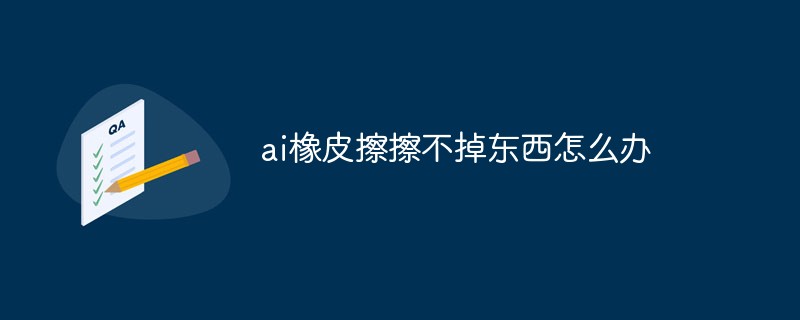 ai橡皮擦擦不掉东西怎么办Jan 13, 2021 am 10:23 AM
ai橡皮擦擦不掉东西怎么办Jan 13, 2021 am 10:23 AMai橡皮擦擦不掉东西是因为AI是矢量图软件,用橡皮擦不能擦位图的,其解决办法就是用蒙板工具以及钢笔勾好路径再建立蒙板即可实现擦掉东西。
 谷歌超强AI超算碾压英伟达A100!TPU v4性能提升10倍,细节首次公开Apr 07, 2023 pm 02:54 PM
谷歌超强AI超算碾压英伟达A100!TPU v4性能提升10倍,细节首次公开Apr 07, 2023 pm 02:54 PM虽然谷歌早在2020年,就在自家的数据中心上部署了当时最强的AI芯片——TPU v4。但直到今年的4月4日,谷歌才首次公布了这台AI超算的技术细节。论文地址:https://arxiv.org/abs/2304.01433相比于TPU v3,TPU v4的性能要高出2.1倍,而在整合4096个芯片之后,超算的性能更是提升了10倍。另外,谷歌还声称,自家芯片要比英伟达A100更快、更节能。与A100对打,速度快1.7倍论文中,谷歌表示,对于规模相当的系统,TPU v4可以提供比英伟达A100强1.
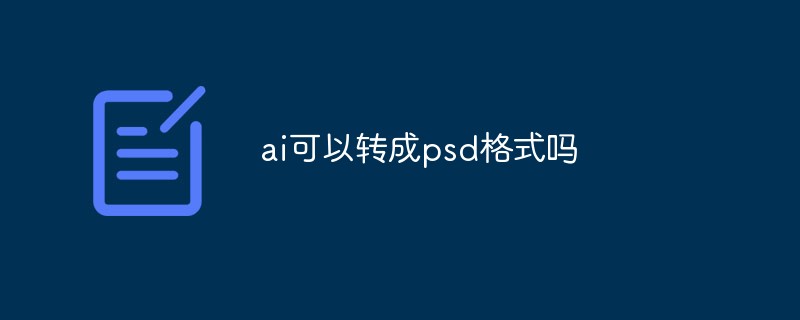 ai可以转成psd格式吗Feb 22, 2023 pm 05:56 PM
ai可以转成psd格式吗Feb 22, 2023 pm 05:56 PMai可以转成psd格式。转换方法:1、打开Adobe Illustrator软件,依次点击顶部菜单栏的“文件”-“打开”,选择所需的ai文件;2、点击右侧功能面板中的“图层”,点击三杠图标,在弹出的选项中选择“释放到图层(顺序)”;3、依次点击顶部菜单栏的“文件”-“导出”-“导出为”;4、在弹出的“导出”对话框中,将“保存类型”设置为“PSD格式”,点击“导出”即可;
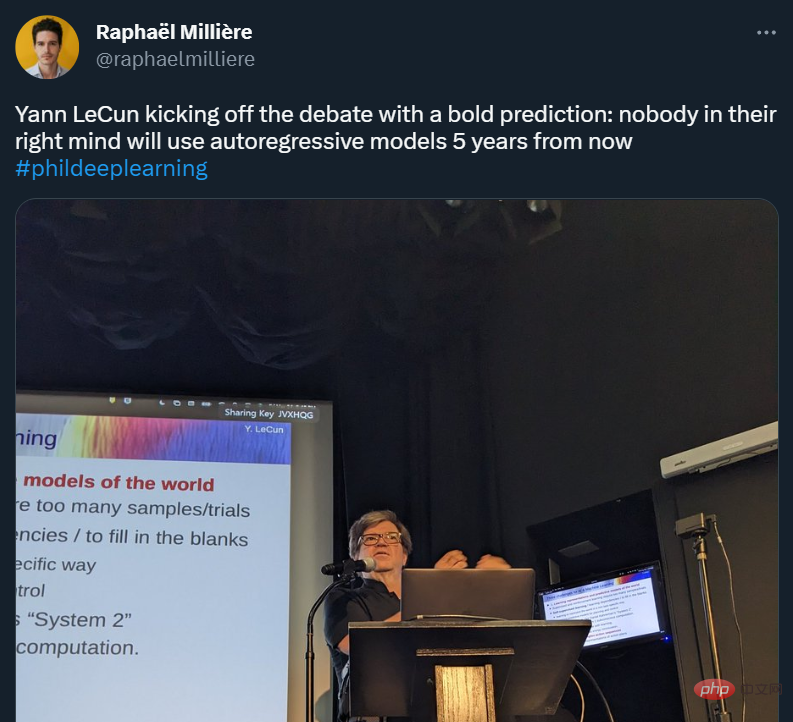 GPT-4的研究路径没有前途?Yann LeCun给自回归判了死刑Apr 04, 2023 am 11:55 AM
GPT-4的研究路径没有前途?Yann LeCun给自回归判了死刑Apr 04, 2023 am 11:55 AMYann LeCun 这个观点的确有些大胆。 「从现在起 5 年内,没有哪个头脑正常的人会使用自回归模型。」最近,图灵奖得主 Yann LeCun 给一场辩论做了个特别的开场。而他口中的自回归,正是当前爆红的 GPT 家族模型所依赖的学习范式。当然,被 Yann LeCun 指出问题的不只是自回归模型。在他看来,当前整个的机器学习领域都面临巨大挑战。这场辩论的主题为「Do large language models need sensory grounding for meaning and u
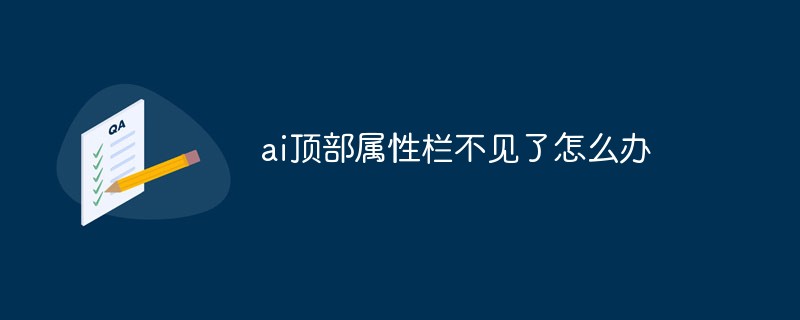 ai顶部属性栏不见了怎么办Feb 22, 2023 pm 05:27 PM
ai顶部属性栏不见了怎么办Feb 22, 2023 pm 05:27 PMai顶部属性栏不见了的解决办法:1、开启Ai新建画布,进入绘图页面;2、在Ai顶部菜单栏中点击“窗口”;3、在系统弹出的窗口菜单页面中点击“控制”,然后开启“控制”窗口即可显示出属性栏。
 强化学习再登Nature封面,自动驾驶安全验证新范式大幅减少测试里程Mar 31, 2023 pm 10:38 PM
强化学习再登Nature封面,自动驾驶安全验证新范式大幅减少测试里程Mar 31, 2023 pm 10:38 PM引入密集强化学习,用 AI 验证 AI。 自动驾驶汽车 (AV) 技术的快速发展,使得我们正处于交通革命的风口浪尖,其规模是自一个世纪前汽车问世以来从未见过的。自动驾驶技术具有显着提高交通安全性、机动性和可持续性的潜力,因此引起了工业界、政府机构、专业组织和学术机构的共同关注。过去 20 年里,自动驾驶汽车的发展取得了长足的进步,尤其是随着深度学习的出现更是如此。到 2015 年,开始有公司宣布他们将在 2020 之前量产 AV。不过到目前为止,并且没有 level 4 级别的 AV 可以在市场
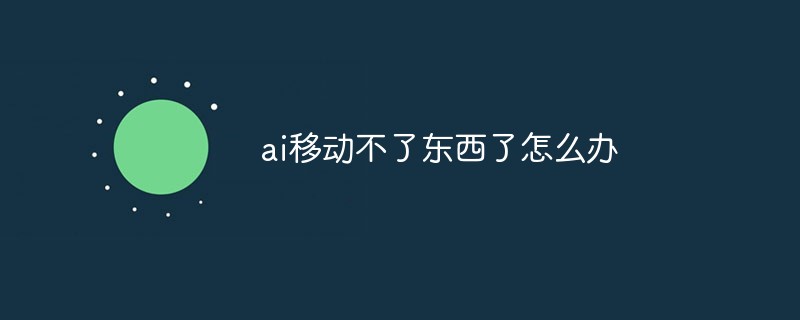 ai移动不了东西了怎么办Mar 07, 2023 am 10:03 AM
ai移动不了东西了怎么办Mar 07, 2023 am 10:03 AMai移动不了东西的解决办法:1、打开ai软件,打开空白文档;2、选择矩形工具,在文档中绘制矩形;3、点击选择工具,移动文档中的矩形;4、点击图层按钮,弹出图层面板对话框,解锁图层;5、点击选择工具,移动矩形即可。


Hot AI Tools

Undresser.AI Undress
AI-powered app for creating realistic nude photos

AI Clothes Remover
Online AI tool for removing clothes from photos.

Undress AI Tool
Undress images for free

Clothoff.io
AI clothes remover

AI Hentai Generator
Generate AI Hentai for free.

Hot Article

Hot Tools

SAP NetWeaver Server Adapter for Eclipse
Integrate Eclipse with SAP NetWeaver application server.

SublimeText3 Linux new version
SublimeText3 Linux latest version

MinGW - Minimalist GNU for Windows
This project is in the process of being migrated to osdn.net/projects/mingw, you can continue to follow us there. MinGW: A native Windows port of the GNU Compiler Collection (GCC), freely distributable import libraries and header files for building native Windows applications; includes extensions to the MSVC runtime to support C99 functionality. All MinGW software can run on 64-bit Windows platforms.

WebStorm Mac version
Useful JavaScript development tools

VSCode Windows 64-bit Download
A free and powerful IDE editor launched by Microsoft






